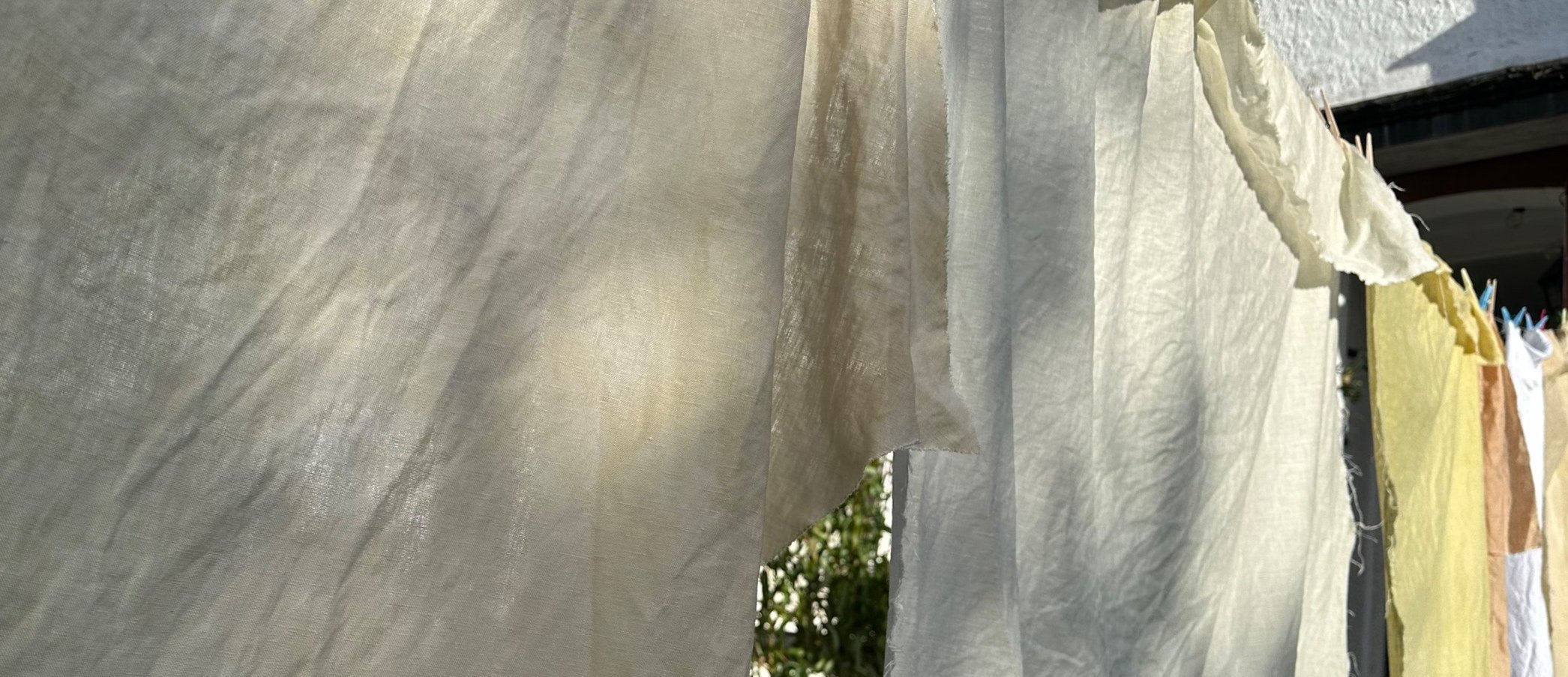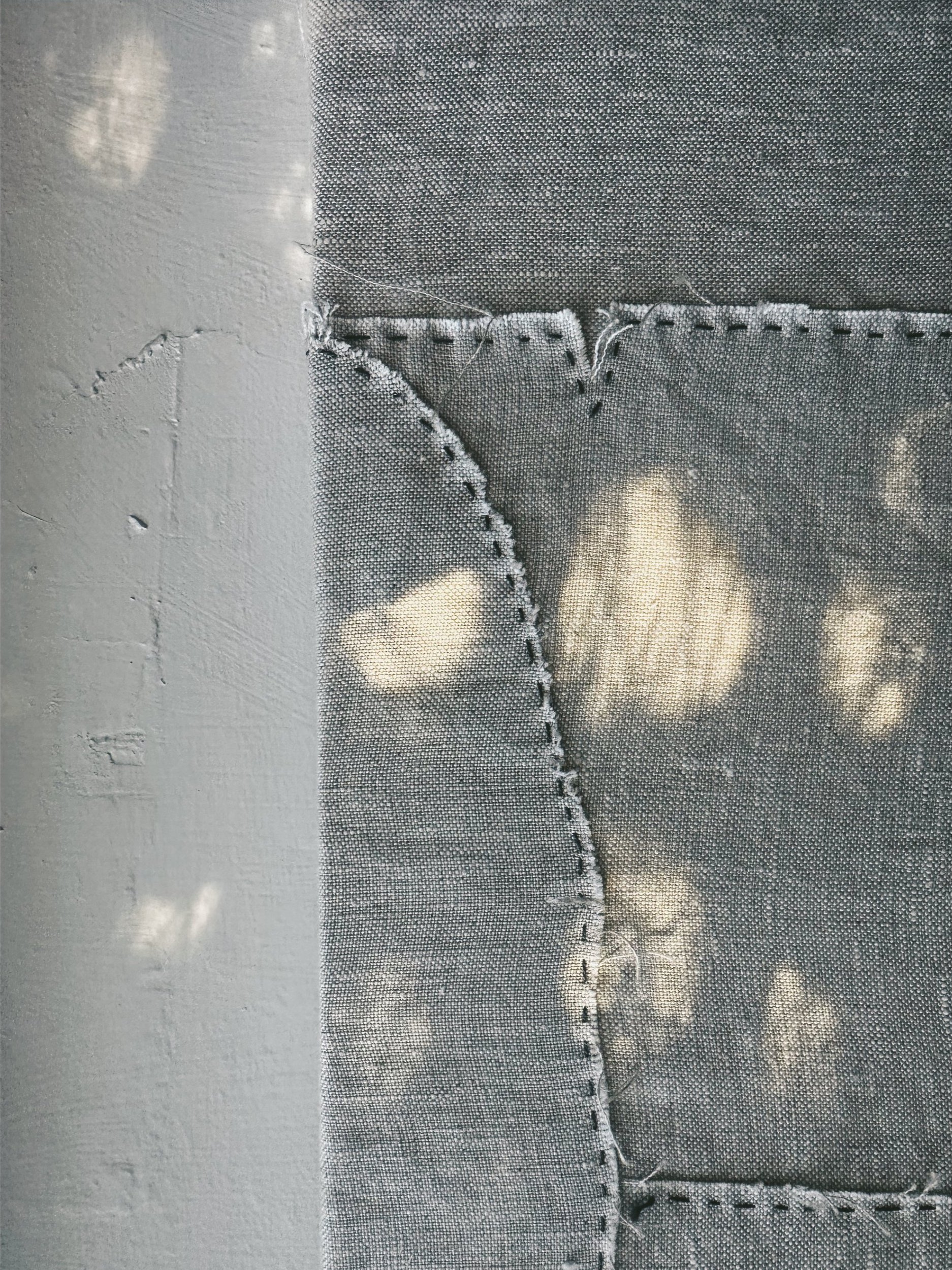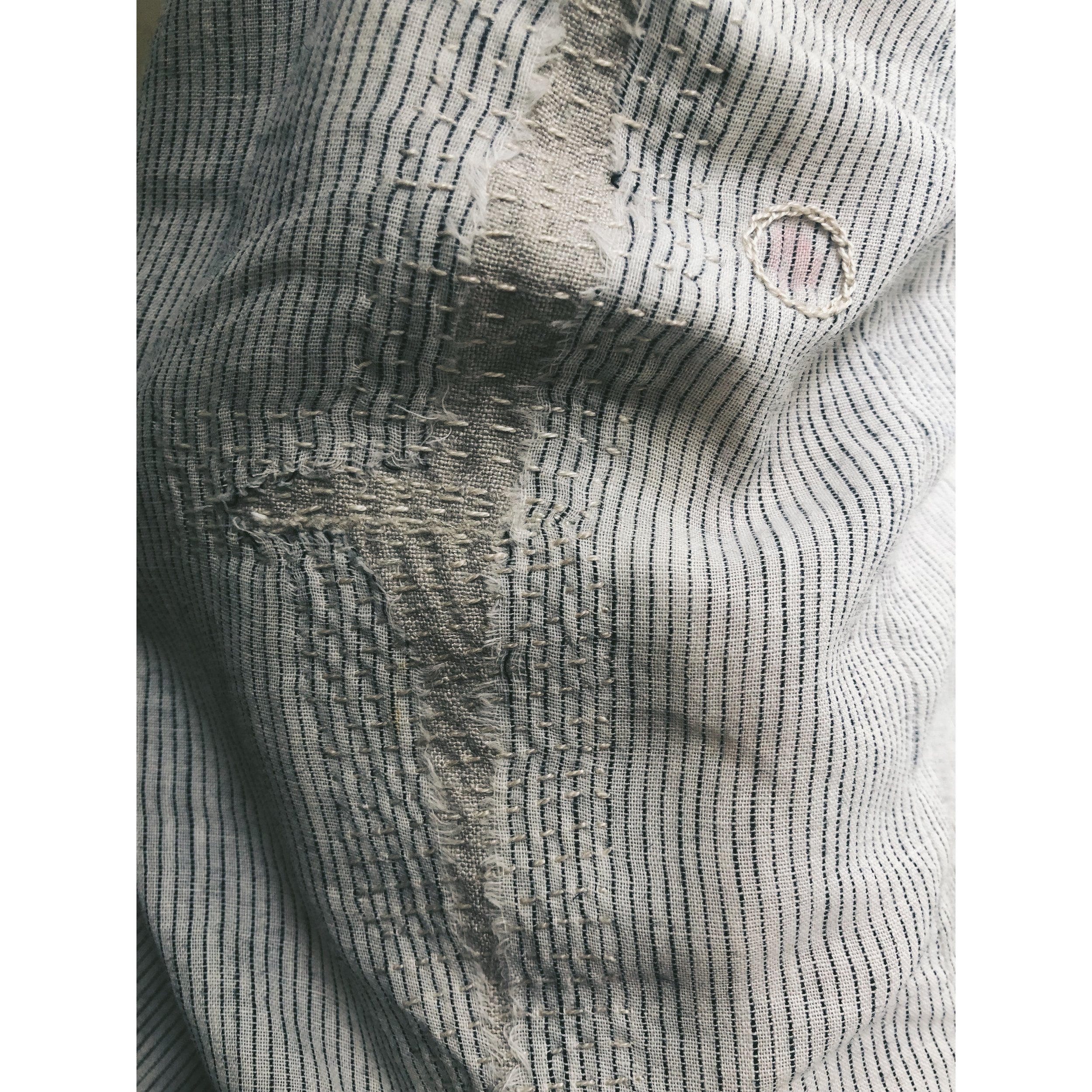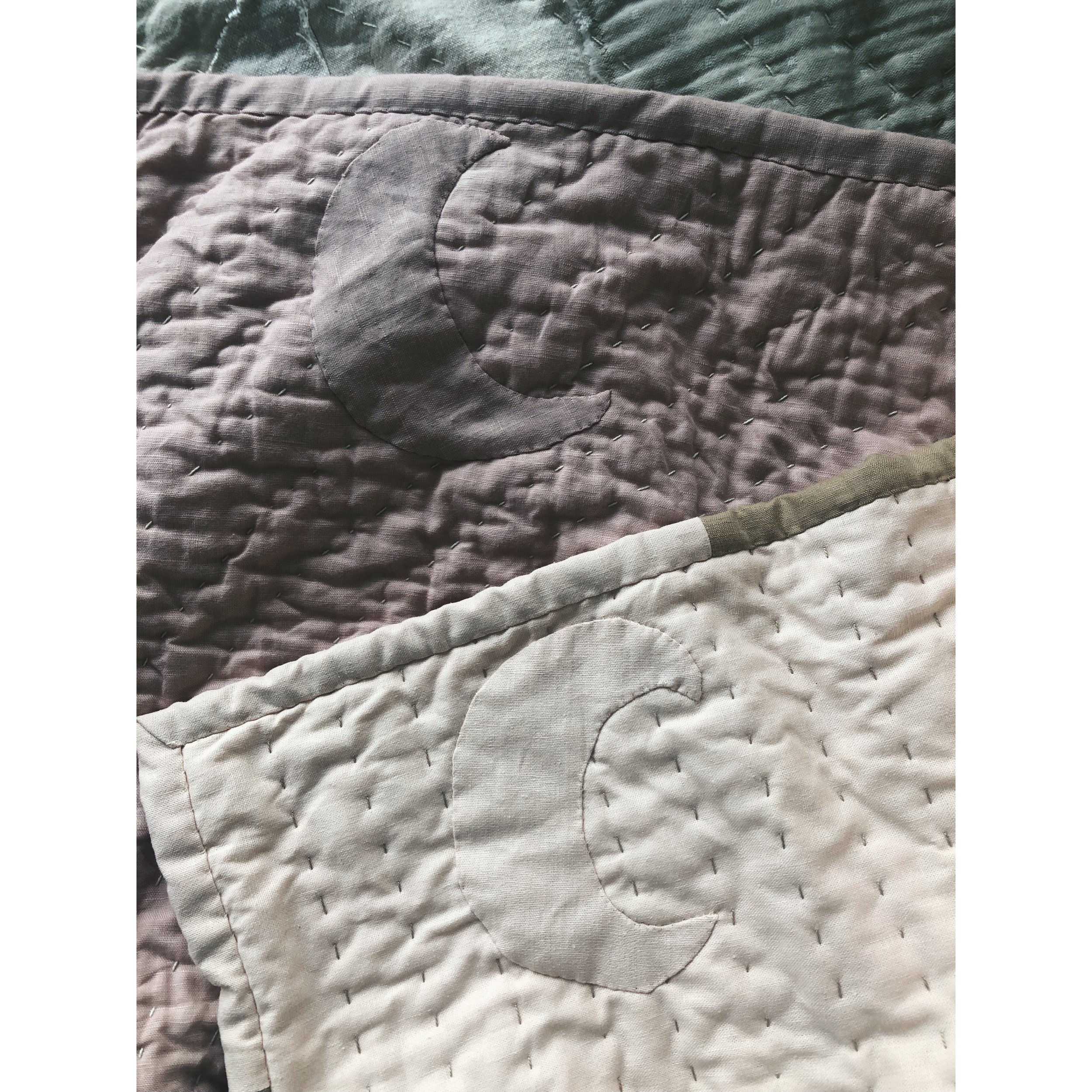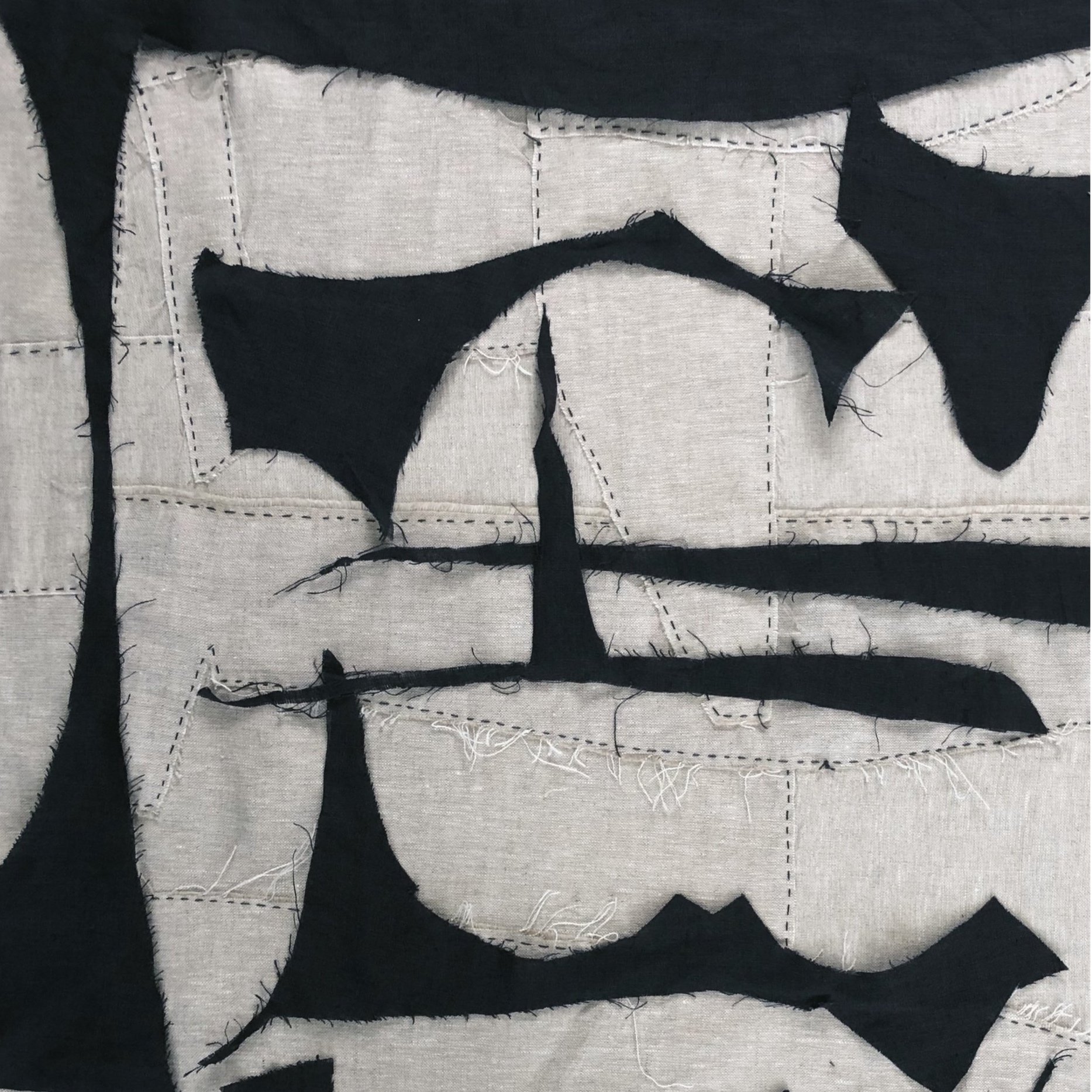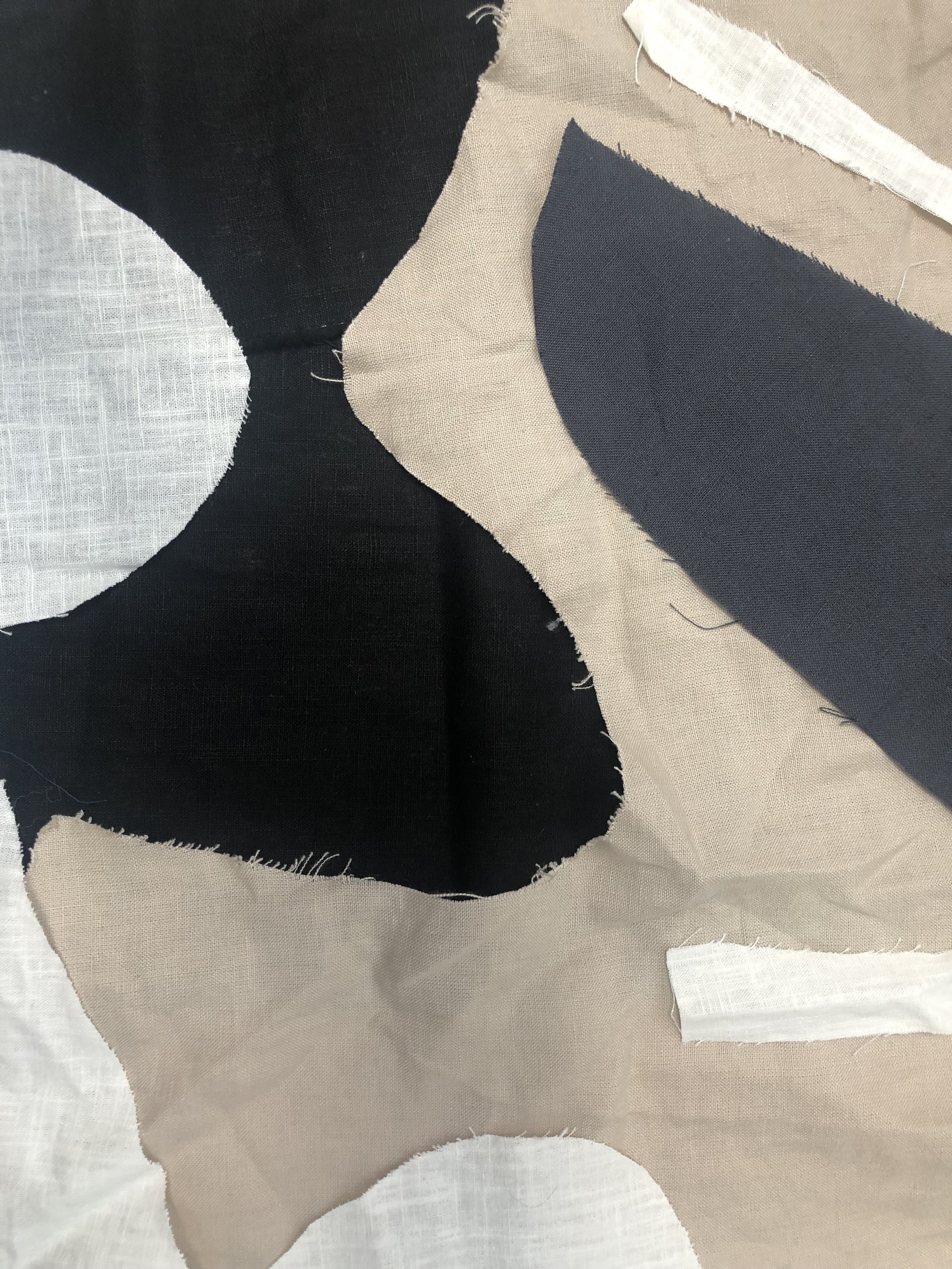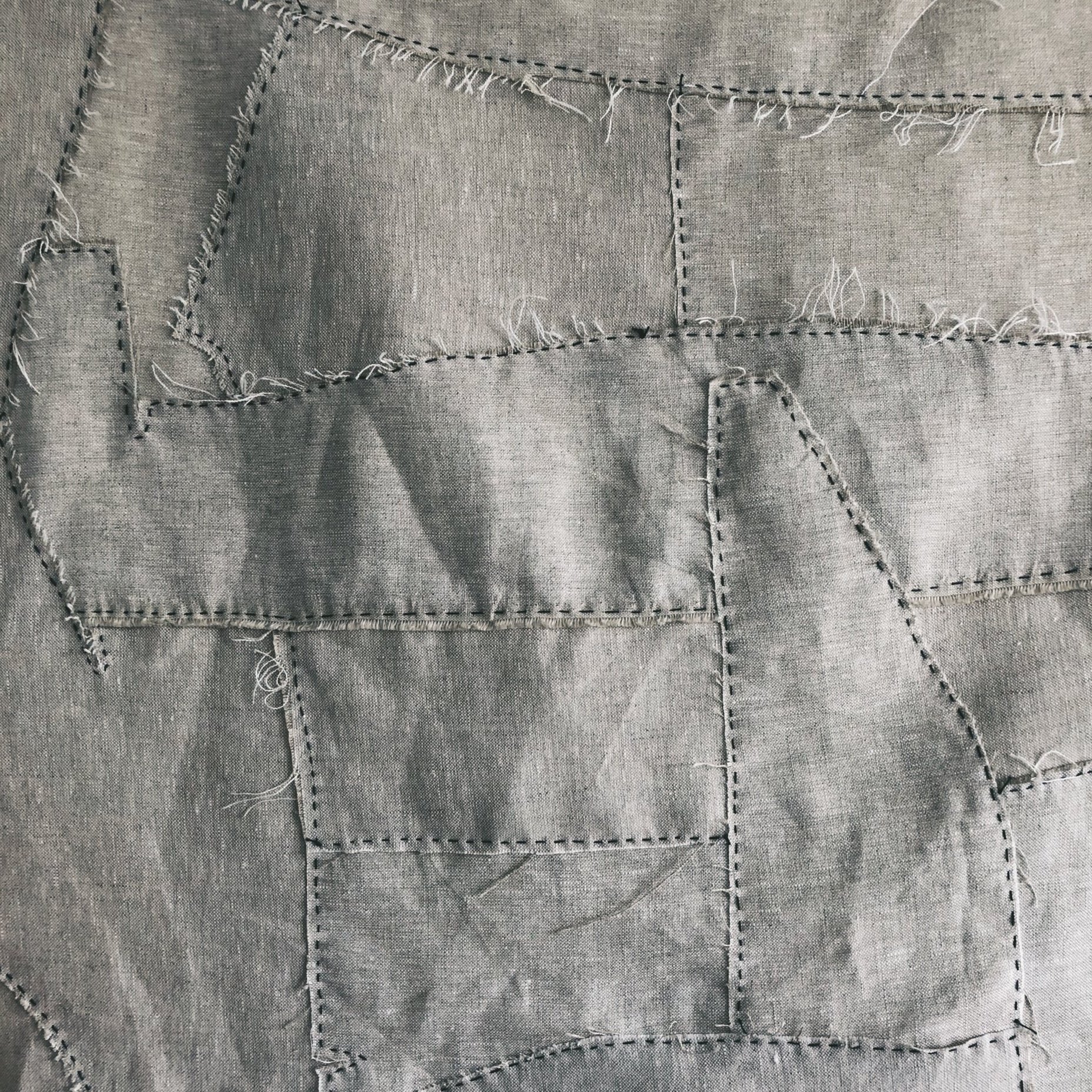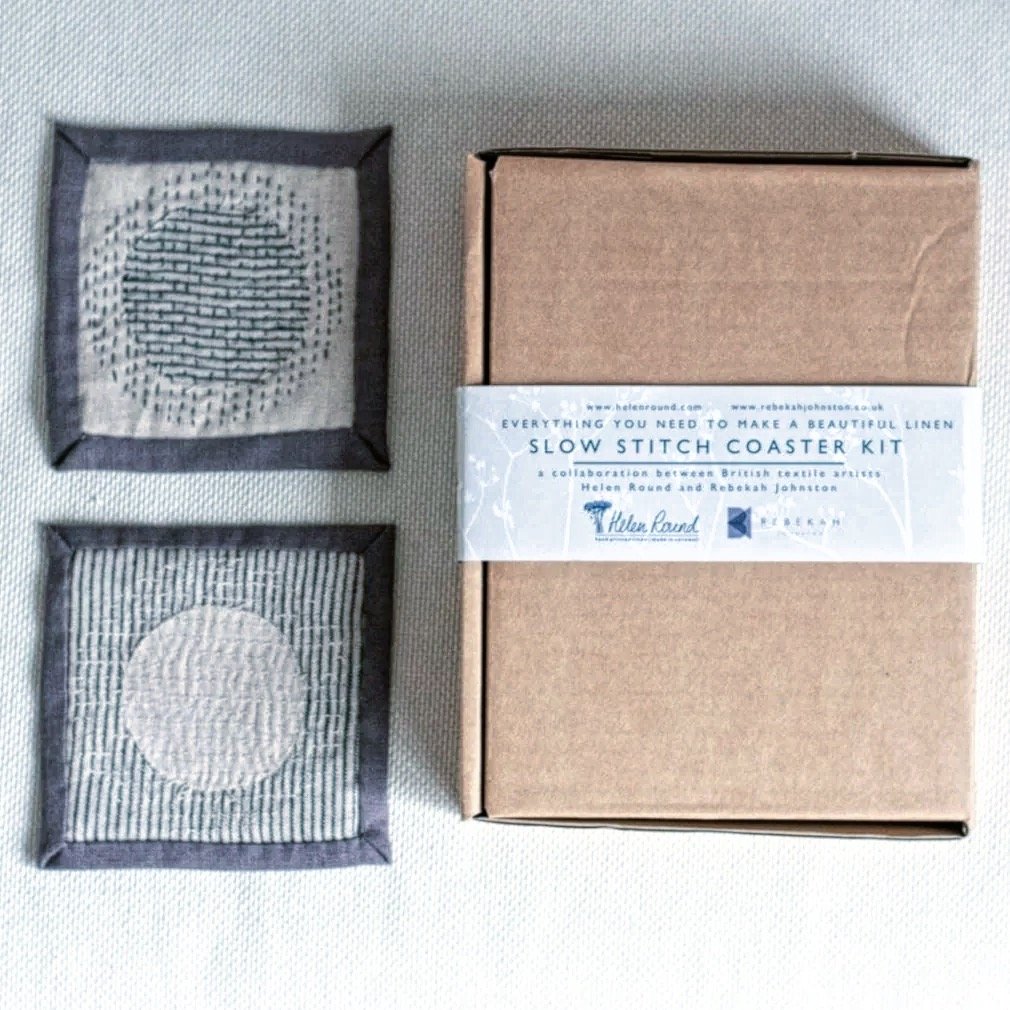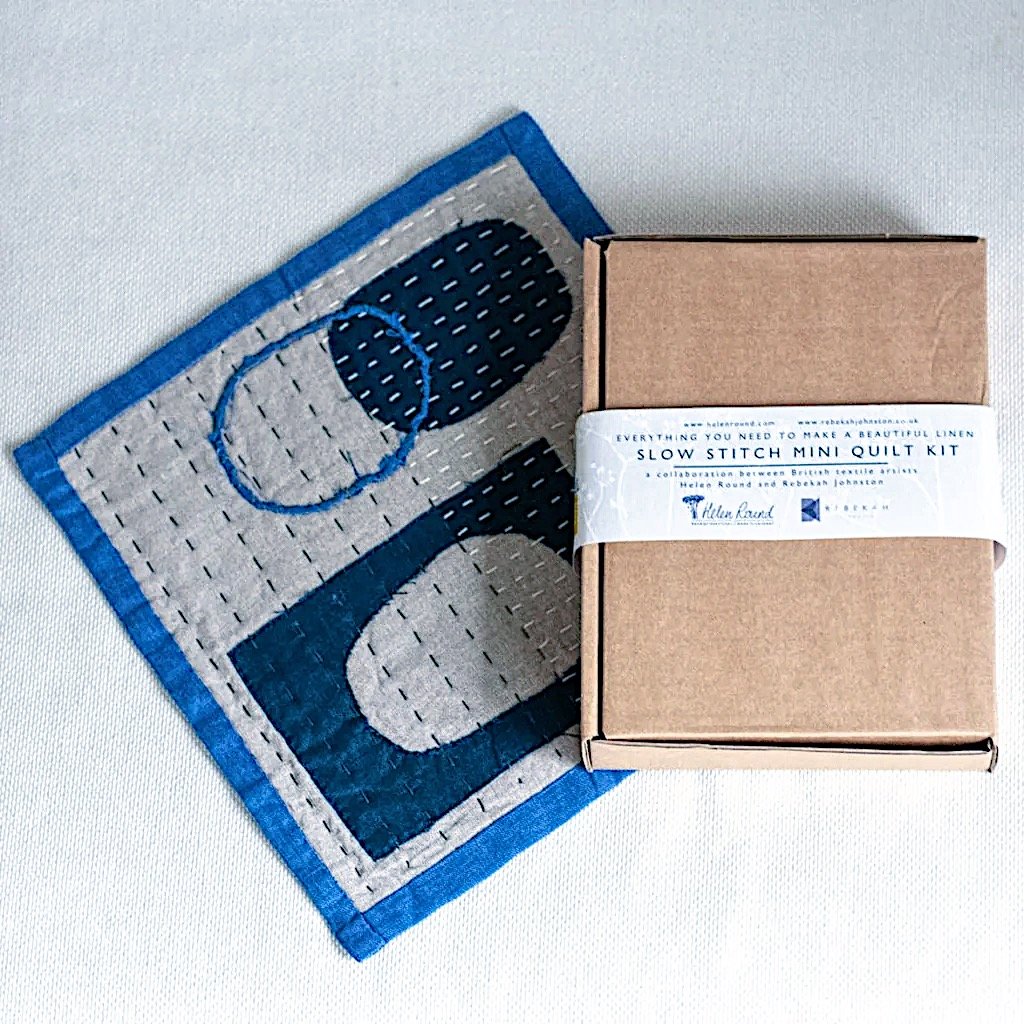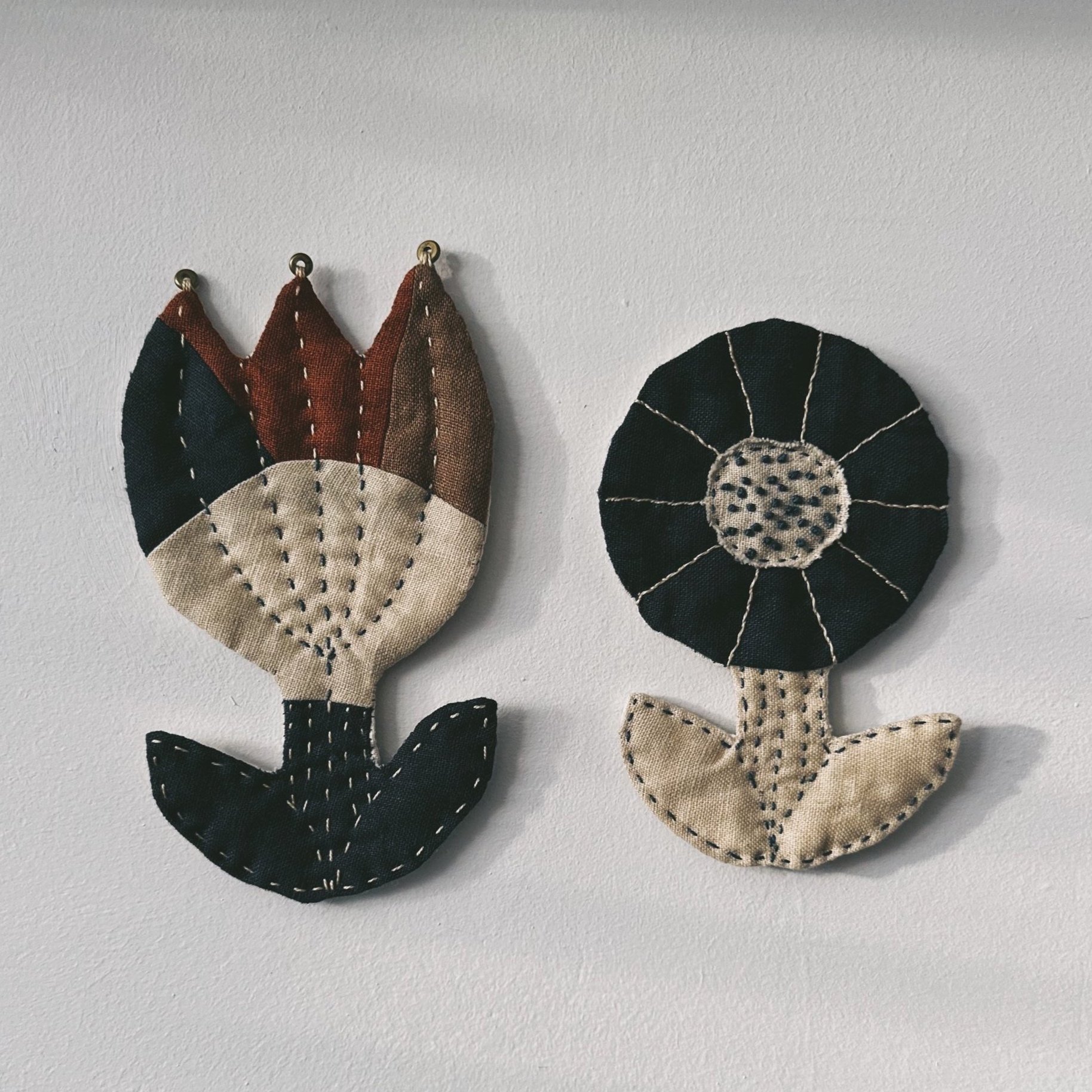5 Ways to Source Fabric Sustainably
I am often asked where I source my fabrics. In a world where environmental concerns are growing, working with sustainable materials is becoming more and more important. With this in mind, I’d like to share my top 5 tips for sourcing fabric sustainably.
Reuse What You Have:
Sustainable practices begin at home. Before buying new, consider repurposing what you already own. Old bedsheets, curtains, and even garments can be transformed into new pieces of beauty and functionality. This not only reduces waste but also infuses your creations with a unique history and character. Items that are torn or frayed could have this highlighted as a feature of the design rather than a defect. This is a great opportunity to work a visible mend. Faded fabrics could be over dyed or printed on to.
Charity Shop Treasures:
Embrace the thrill of the hunt by exploring local charity shops and second-hand stores. These treasure troves often hold hidden gems waiting to be rediscovered. By giving pre-loved clothing and fabrics a new lease on life, you contribute to a circular economy while indulging in the joy of sustainable discovery. Charity shops can also by a fantastic source of vintage threads and notions. Don’t forget you can also explore second hand online – sites like Freecycle, Facebook Marketplace and Gumtree often list items for free.
Offcuts from Dressmakers:
Purchasing fabric offcuts has become my favourite way to buy fabric. Often the offcuts arrive in colours I wouldn’t normally consider or in unusual shapes that I wouldn’t have cut myself. By embracing these unconventional materials, you not only reduce waste but also challenge yourself to innovate and create outside the box. A little local research should help you identify if there are any dressmakers who would be willing to collaborate with you. Often you are doing them a favour by helping to reduce their own waste.
I also save every offcut from my own makes. Even the smallest scrap gets repurposed, whether in an applique design or as stuffing in a cushion. If you need inspiration for what do with your fabric scraps, check out my How to Make an Abstract Mini Quilt tutorial.
Embrace Deadstock:
What exactly is deadstock fabric? Deadstock refers to excess fabric left over from production runs that could otherwise go to waste. By salvaging and repurposing deadstock, you breathe new life into materials that might otherwise end up in landfills. Embracing deadstock not only minimises environmental impact but also adds a layer of exclusivity to your creations, as each piece becomes a limited edition in its own right. Some fabric suppliers have a section listed on their websites for deadstock and end of roll fabrics and some companies specify in the resale of deadstock. I often use Amothreads whose selection is frequently updated.
Invest in Organic, High-Quality Fabrics:
When new fabric is a necessity, opt for high-quality organic materials from reputable retailers. My fabric of choice is linen – partly because I love its look and handle but also because it is one of the most sustainably produced fabrics. The method of producing linen fabric from the flax plant uses far less water than it does to produce the same amount of cotton. This makes it a more sustainable choice. Fewer pesticides are used to grow flax than in cotton growing, and linen fibres can be processed without the use of chemicals. Every part of the flax plant is utilised resulting in zero waste and once it has finished its life, linen fabric will simply biodegrade with no harmful waste or by-products.
Conventional cotton farming is notorious for its heavy use of pesticides and water consumption. Organic cotton, on the other hand, is grown without synthetic chemicals, relying on natural methods like crop rotation and composting to maintain soil fertility. Choosing organic cotton not only mitigates environmental harm but also supports the livelihoods of cotton farmers. When you can, buy organic: while the initial investment may be higher, the long-term benefits for both the planet and your creations are invaluable.
In crafting this hierarchy, it's important to acknowledge that sustainability is a journey rather than a destination. Each step, no matter how small, contributes to a collective effort toward a more eco-conscious future. As creators, we hold the power to shape industries and redefine norms. By prioritising sustainability in our fabric sourcing practices, we not only honour our craft but also pave the way for a more vibrant, resilient planet.
Sustainable sewing project ideas
The Slow stitch Coasters kit and Slow stitch Mini Quilt kit contain linen fabric offcuts from Helen Round’s studio as well as all of the tools and materials needed to make the finished outcome. The Make a Flower Mini quilt and Make a Pair of Abstract Mini Quilts are ideal projects to use up left over fabric scraps.

